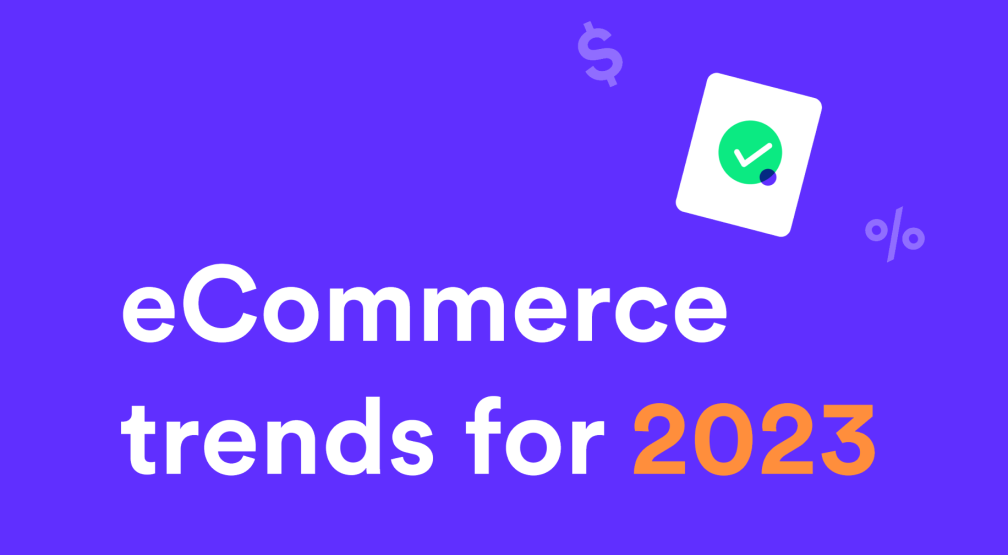Get ready for the retail peak season: Costs and preparations you need to know
With Black Friday and Christmas fast approaching, are you fully prepared for the surge in consumer demand? Deloitte research shows that Canadians plan to spend 67% of their holiday budget on or after Black Friday, leaving retailers less than four highly competitive weeks to capture their share of consumer spending.
Like any other peak season, this period comes with higher costs — read on to find out how you can best manage these extra expenses and explore strategies to maximise your sales potential.
Key costs to watch during the retail peak season
As tempting as it is to simply offer a discount to boost sales during the peak season, be mindful of the following costs to protect your margins.
1. Inventory and stock management
Apart from the cost of your products, you should also consider:
Storage: Warehousing fees, utilities, and security
Shrinkage: Potential inventory loss due to damage or spoilage
Logistics and compliance costs: Insurance, taxes, customs, order fulfilment, and delivery costs
Inventory management: Software to help you track and manage inventory efficiently
2. Staffing and labour costs
It's common practise for businesses to hire seasonal workers for production, packaging, and general customer service during peak seasons. Expect inflation in labour costs, and plan early to avoid labour shortages and compromised customer experience.
3. Logistics peak surcharge
As the holiday season drives up shipping volumes, eCommerce businesses should plan for potential peak surcharges imposed by couriers. For example, Canada Post, UPS, and FedEx implement surcharges ranging from CAD $1.50 to $4.50 per package based on size, service level, and destination. These added costs can significantly impact your shipping budget and pricing strategies, so it's crucial to account for them early. Adjust your logistics plans to maintain profitability while ensuring timely delivery during this competitive period.
4. Marketing and advertising expenses
Advertising costs may seem straightforward, but in reality, most of these marketing expenses are overlooked:
Promotions, e.g., discounts, free gifts, free samples, free trials
Content production, e.g., flyers, posters, banners, blogs, videos, websites
Software subscription, e.g., graphic design tools, video editing, automation tools, analytics
5. Foreign merchant fees
If your business operates in multiple markets, look out for foreign transaction fees (typically 1-3% of the transaction amount) and FX conversion fees that will quickly erode your margins.
However, by utilising financial tools such as Airwallex, you can avoid overseas transaction fees and FX conversion fees by settling multiple currencies directly into your multi-currency account.
Put Airwallex to the test. Try us for free.
Strategies for effective preparation
A well-rounded preparation for the sales peak season should encompass inventory management, supply chain optimisation, customer satisfaction, and data collection for future improvement.
1. Forecasting demand
Stockouts and excessive unsold inventory are both retailers’ worst nightmares. Conduct a thorough demand analysis to decide how much inventory you should keep:
Gather data: Refer to past sales data and economic indicators. Be mindful of seasonal sales patterns, promotional impacts, and industry shifts.
Data analysis: Leverage forecasting software to identify patterns and predict future demand.
Adjust for external factors: Consider changes in consumer behaviour and upcoming local events that might affect demand.
2. Optimising supply chain
Delivering your products to your customers at the right time is crucial for customer satisfaction. It also increases the chance of returning customers and referrals. You may want to:
Diversify shipping options: Partner with multiple shipping carriers to avoid potential delays.
Implement a just-in-time system: Deliver ingredients / raw materials to production only when needed. This can help you reduce waste and improve cash flow, especially if your products are perishable.
3. Enhancing customer experience
Delight your customers by improving their shopping and checkout experience on your eCommerce site. According to our research, there are a few surefire ways to enhance their experience and boost your sales:
Display in local currency: 93% of global consumers say that seeing the price in their local currency impacts their purchase decision.
Provide transparent pricing: 35% of consumers claim they are unlikely to return to a merchant after being charged hidden fees.
Offer delivery tracking: Approximately 70% of customers worldwide are willing to pay extra for faster delivery and tracking capabilities.
4. Utilising technology and tools
Harness the power of technology to streamline your operations and gain insights. Consider using advanced analytics tools to gain deeper insights into your customers’ behaviour for future reference, and leverage automation systems for inventory management and customer service to free up resources.
Boosting sales during peak season
You don’t need a big budget or extravagant creative campaign to be able to boost sales. Consider the following strategic initiatives that capture customer interest and convert it into sales.
1. Effective advertising strategies
Plan your budget and campaign efficiently with the following tips:
Channel optimisation: Advertising on social media might seem like a no-brainer (with a typical minimum daily budget of around CAD $5), but don’t overlook the power of search engines to capture the attention of intentional buyers. Search engine advertising allows businesses to target users actively searching for products, making it a powerful channel to drive conversions.
Content creation: Ride on the latest trends to create content that engages your customers — or dig out your old content to adapt and reuse across platforms to save costs.
Partnerships and affiliates: Collaborate with influencers, bloggers, vloggers, or even a brand crossover that aligns with your target market to extend your reach. Consider a profit-sharing model or affiliate marketing instead of a fixed fee to improve cash flow.
2. Promotions and discounts
Apart from simply offering discounts, there’s a range of ideas you can reference regarding promotions:
BOGO and bundling promotions: Great for fast-moving commodities that people must restock regularly.
Flash sales: Create a sense of urgency by offering deep discounts for a short period. Take Canadian retailer Hudson’s Bay as a reference: they frequently hold flash sales with up to 70% off selected products, ranging from fashion to home goods. These limited-time offers encourage traffic and customer interest by promoting deep discounts for just 24-48 hours, driving urgency and boosting conversions.
Freebies: Free trials, samples, gifts, giveaways, and free shipping — if your products or services are relatively new to the market, offering freebies is an effective way to introduce customers to your brand.
Referral programme: Leverage the word-of-mouth of your existing customers while adding extra value for both parties. Take Costco Canada, for example. Its referral programme offers a CAD $25 Costco.ca voucher when a friend signs up for a Gold Star membership and CAD $50 for an Executive membership. New members benefit, and referrers are rewarded as well, encouraging members to spread the word and driving mutual value for everyone involved. The programme also cleverly incentivizes higher-value memberships with increased rewards.
Cashbacks and rebates: Motivate customers to buy more by allowing them to earn more from each purchase.
Other promotion strategies include coupons, loyalty programmes, charitable causes and donations, co-marketing, and more.
3. Leveraging social media
Community marketing is the keyword in today’s world — instead of simply pushing social media content one-way, adopt the following strategies to build a community through social media and nurture genuine engagement.
Live engagement: Host live sessions on social media platforms to interact directly with your customers. It can be Q&A sessions, live product demonstrations, or giveaways. This can make your audience feel directly involved and valued.
User-generated content: Encourage your customers to share their own experiences using your products. Whether it’s a photo, video, or a text-based review, user-generated content inspires trust and loyalty in others.
Transparency and authenticity: Keep your customers informed, entertained, and motivated by sharing real stories behind your brand, such as behind-the-scenes glimpses, team introductions, or “day in the life” features.
Leverage other engagement features: Be it Instagram Thread, Facebook direct messaging, or polls and surveys, leverage existing social media features that facilitate real-time conversations to gather feedback and engage customers.
Streamline payments and reduce costs with the Airwallex Borderless Card
Managing international payments and multiple currencies during the peak shopping season can be complex and costly. Businesses operating internationally often face high foreign exchange fees and hidden transaction charges, cutting your margins. Airwallex’s Borderless Card offers a way to manage these payments efficiently, eliminating foreign exchange fees and providing up to a 1% cash rebate on every transaction.
With built-in tools for tracking expenses, setting spending limits, and managing multiple accounts in real time, businesses can maintain tight control over finances during this high-spend period. Cards can be issued quickly, and team spending can be easily managed from a centralised platform, simplifying the process as you prepare for the peak season.
Corporate cards for simplified spending.
Frequently asked questions
1. What are the transaction fees for using Airwallex Borderless Card?
0%. Airwallex Borderless Cards do not charge foreign transaction fees or any other hidden fees. Moreover, you can eliminate FX fees by paying directly from the balances of your multi-currency global account.
When currency conversion is needed, you can enjoy the market-beating interbank exchange rate to exchange currencies on the Airwallex platform. We charge as low as 0.5% above the interbank exchange rate as a conversion fee.
2. How should I best prepare for the upcoming sales peak season?
To prepare for the upcoming sales peak season, focus on conceptualising and implementing the following strategies:
Be mindful of the additional costs and surcharges involved to protect your margins, such as logistics surcharge, additional labour costs, and marketing expenses
Earn up to 1% rebates* by paying the above costs with Airwallex Borderless Card
Forecast future demand and maintain an optimal level of inventory
Optimise the supply chain and implement a just-in-time system to reduce waste for perishable goods
Enhance customer experience with the latest insights from our research, including providing local payment methods, displaying prices in local currency, and more
Plan your budget and promotion effectively based on your target audience and product nature
*T&Cs apply.
Share
View this article in another region:Canada - undefinedHong Kong SAR - EnglishHong Kong SAR - 繁體中文
Related Posts

How eComm businesses can avoid the conversion trap
•3 minutes

How to use Airwallex for automated insurance payouts
•5 minutes
